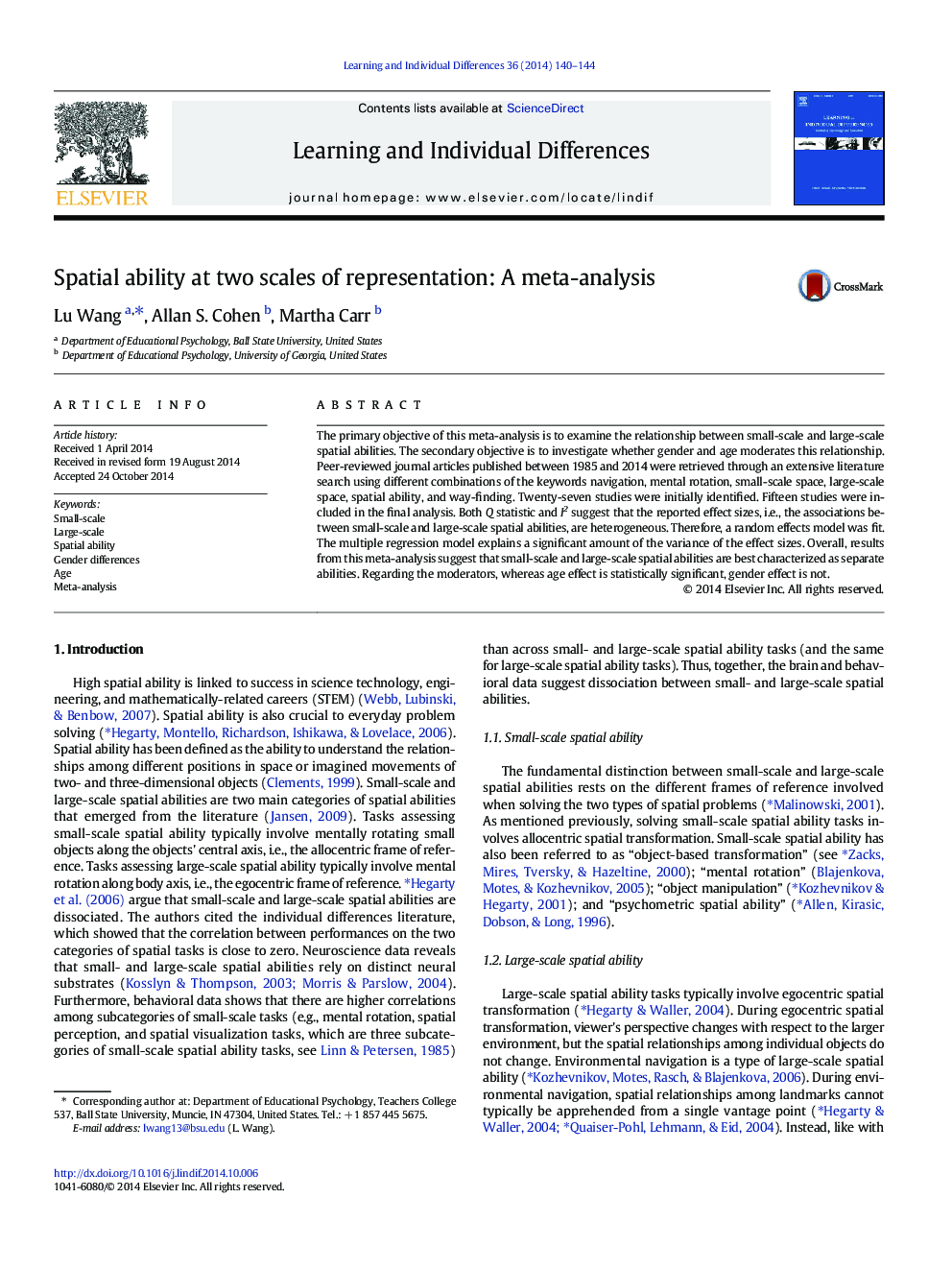| Article ID | Journal | Published Year | Pages | File Type |
|---|---|---|---|---|
| 6845020 | Learning and Individual Differences | 2014 | 5 Pages |
Abstract
The primary objective of this meta-analysis is to examine the relationship between small-scale and large-scale spatial abilities. The secondary objective is to investigate whether gender and age moderates this relationship. Peer-reviewed journal articles published between 1985 and 2014 were retrieved through an extensive literature search using different combinations of the keywords navigation, mental rotation, small-scale space, large-scale space, spatial ability, and way-finding. Twenty-seven studies were initially identified. Fifteen studies were included in the final analysis. Both Q statistic and I2 suggest that the reported effect sizes, i.e., the associations between small-scale and large-scale spatial abilities, are heterogeneous. Therefore, a random effects model was fit. The multiple regression model explains a significant amount of the variance of the effect sizes. Overall, results from this meta-analysis suggest that small-scale and large-scale spatial abilities are best characterized as separate abilities. Regarding the moderators, whereas age effect is statistically significant, gender effect is not.
Related Topics
Social Sciences and Humanities
Psychology
Developmental and Educational Psychology
Authors
Lu Wang, Allan S. Cohen, Martha Carr,
